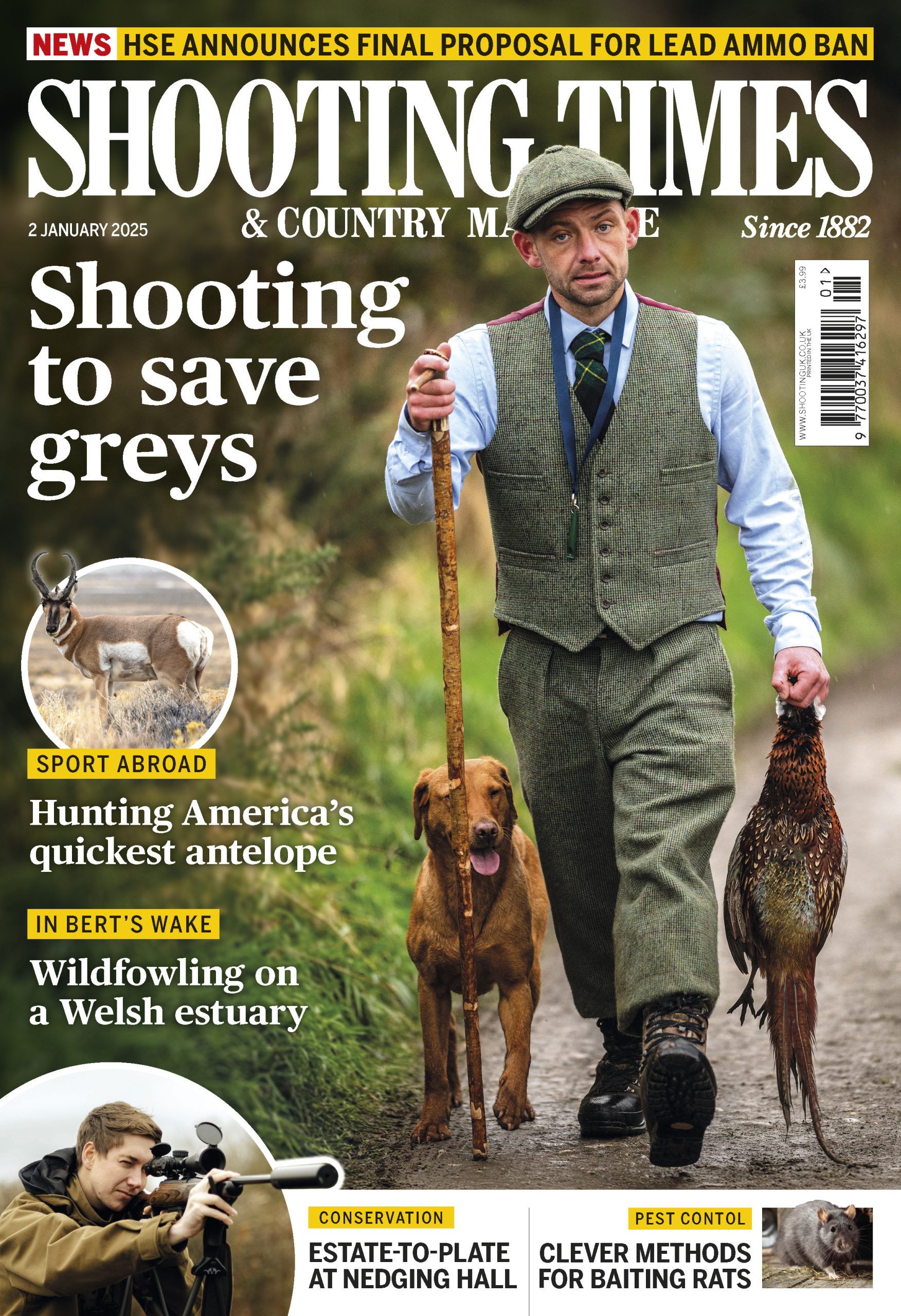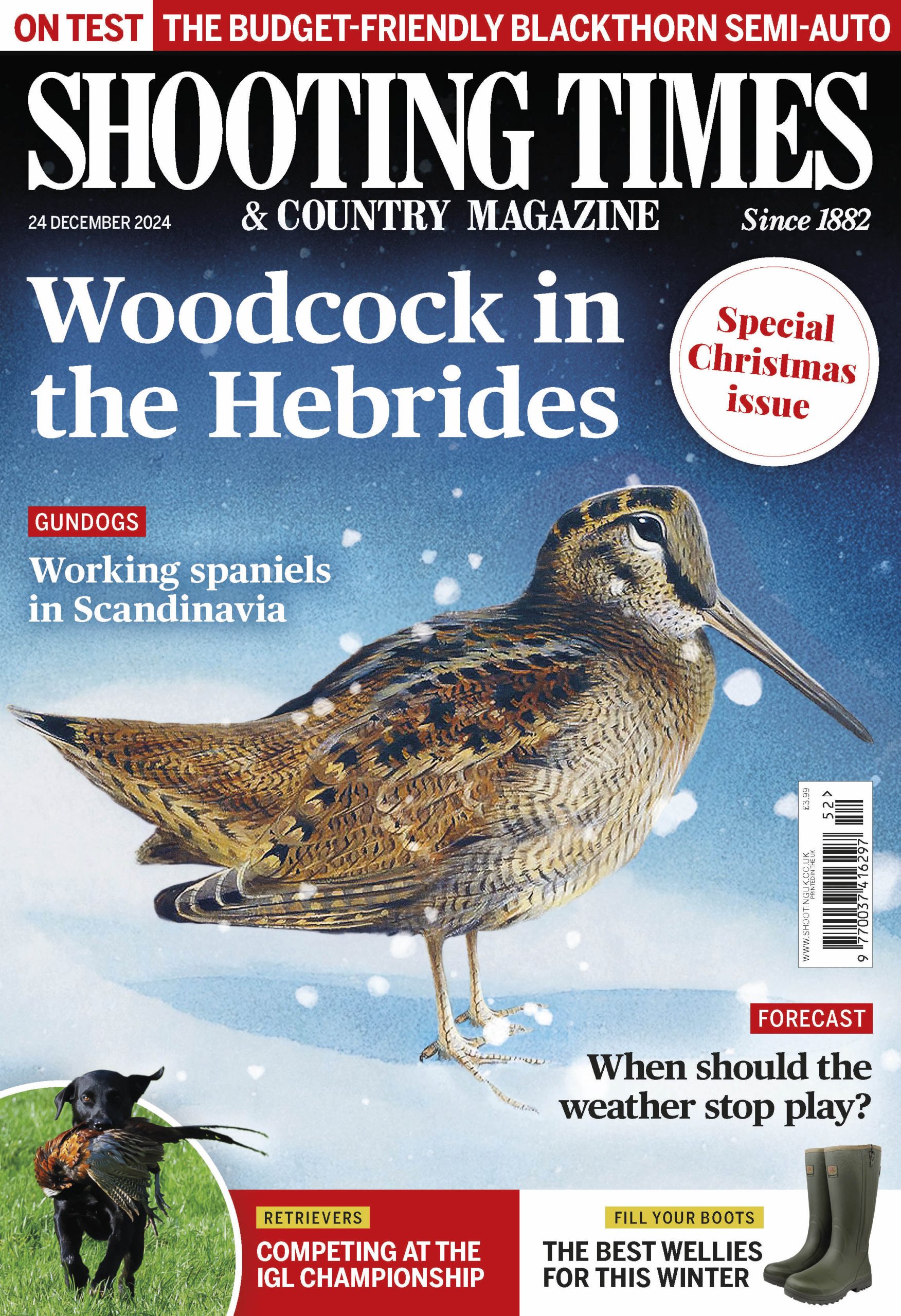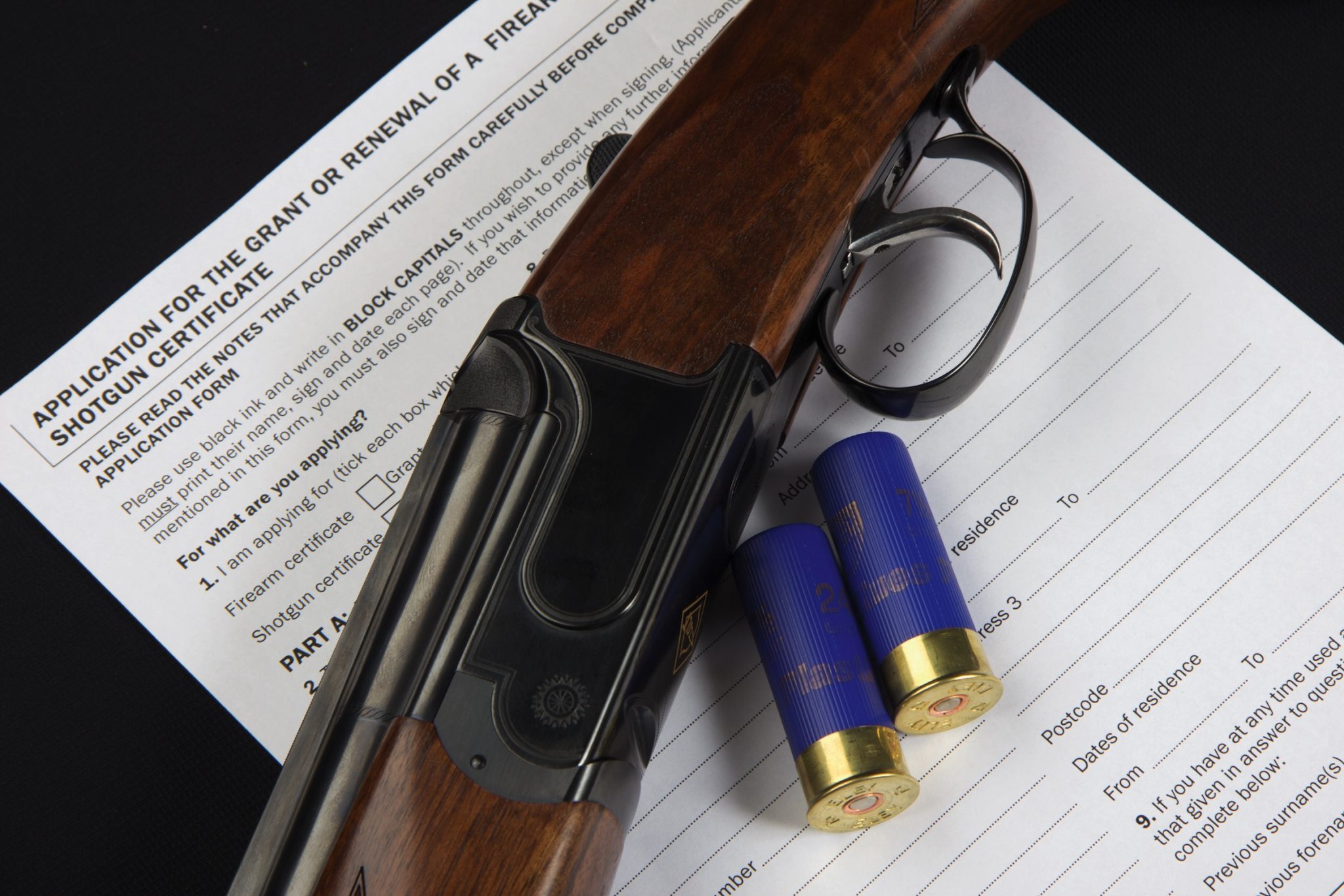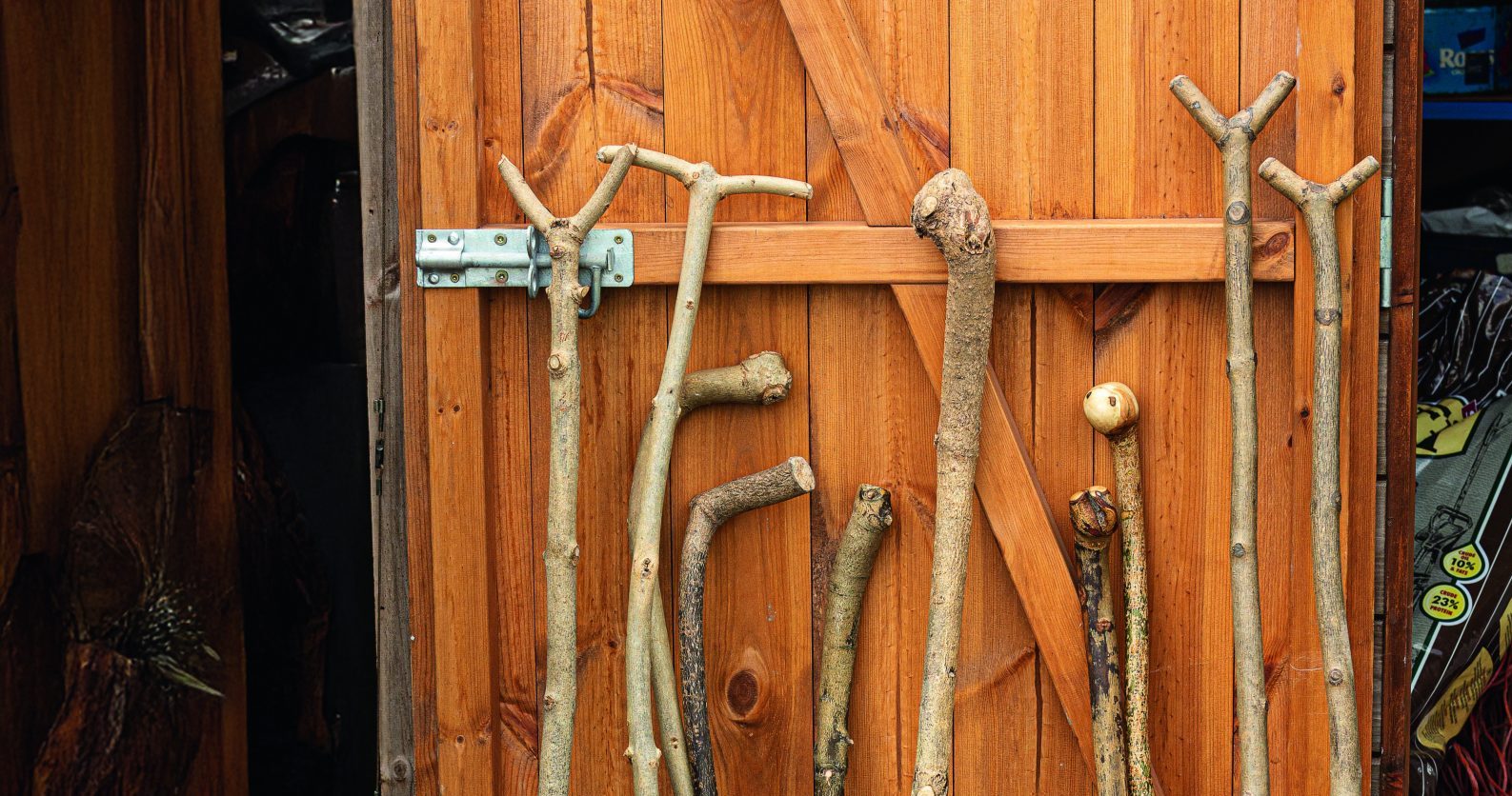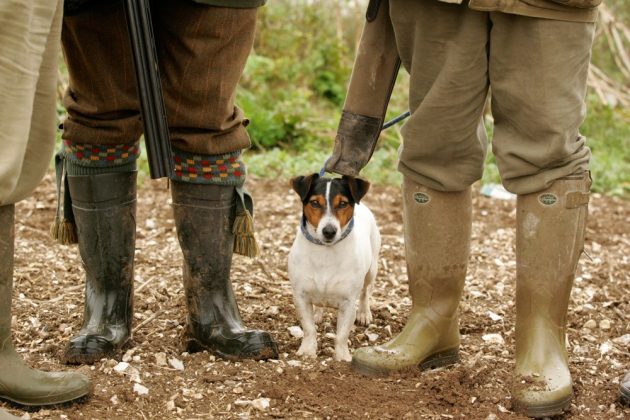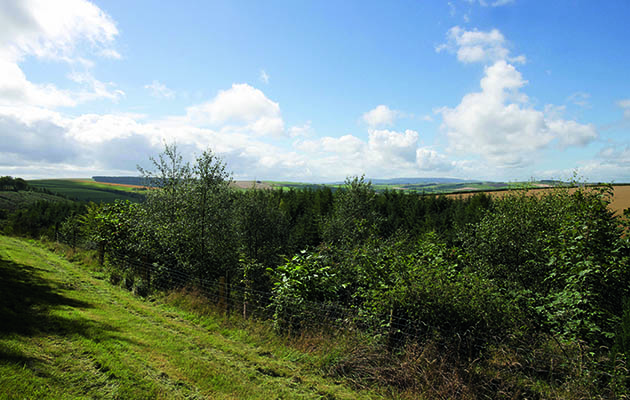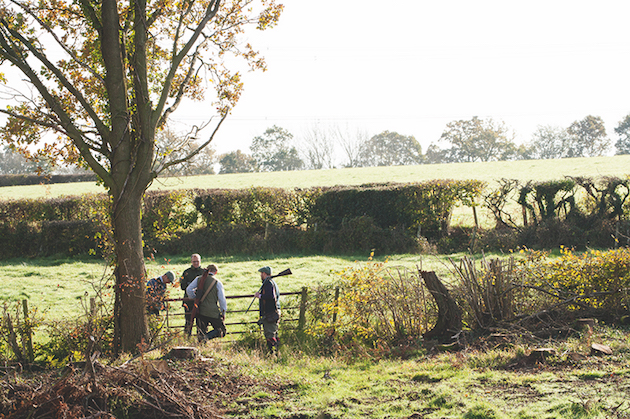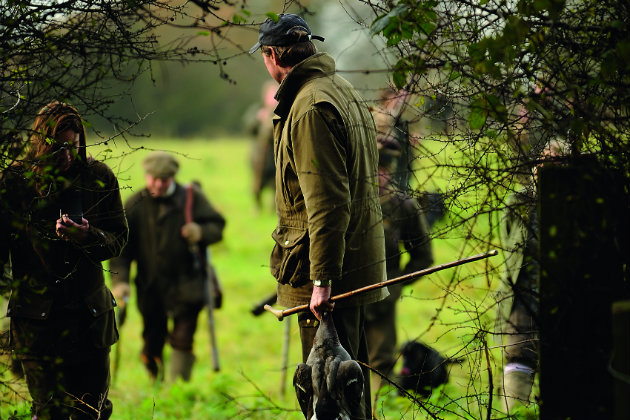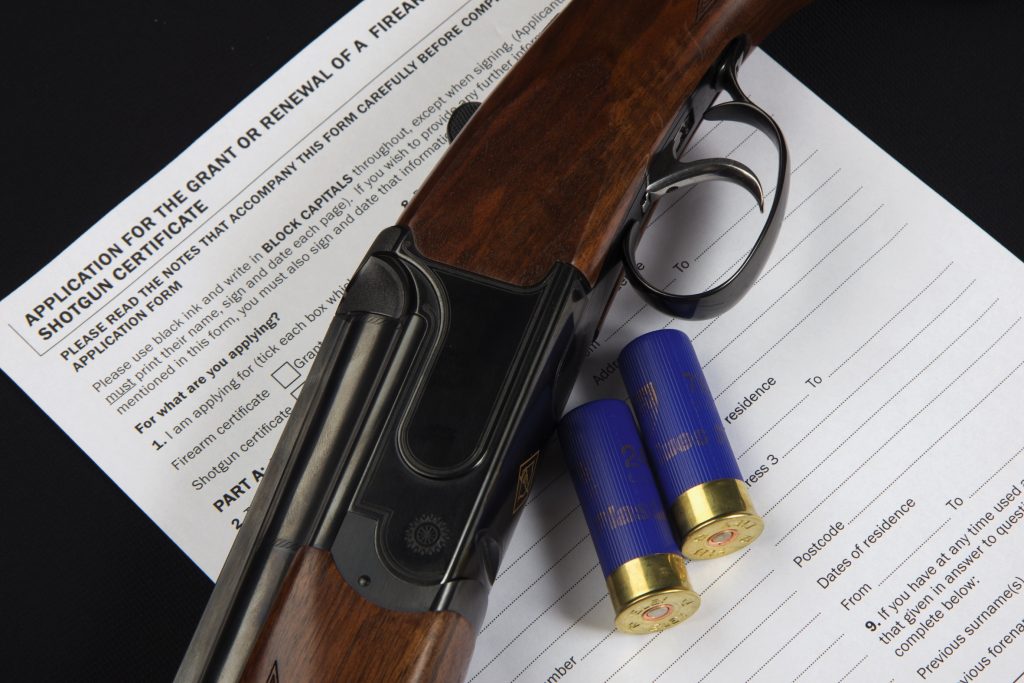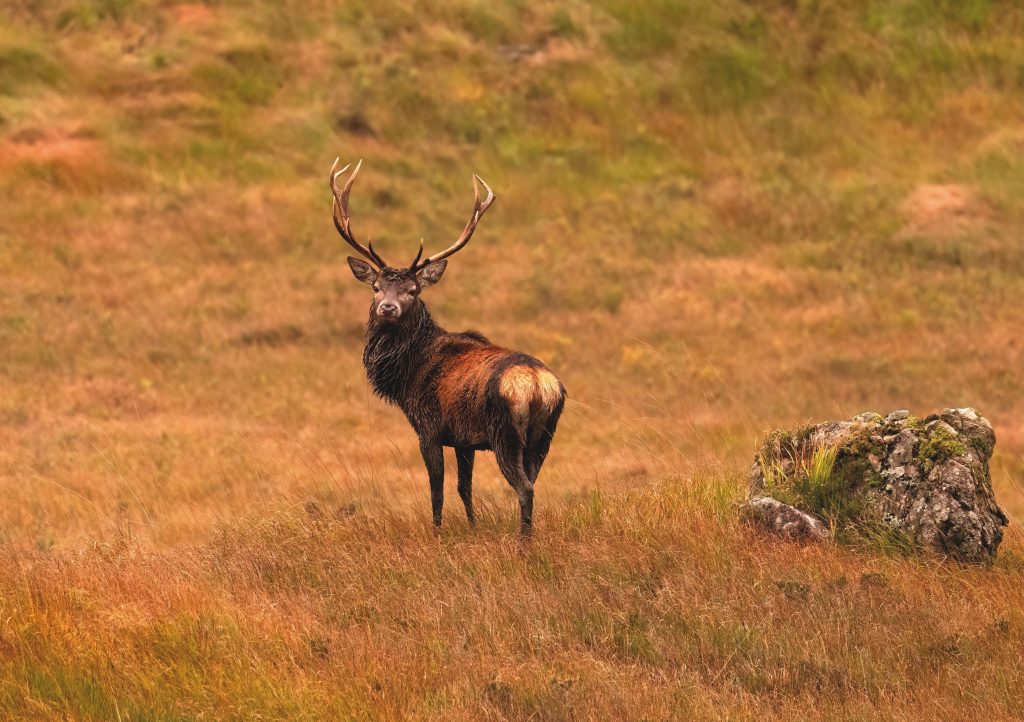Back in the 1970s I made a couple of life-changing decisions. I resigned from a secure job in banking to…
Win CENS ProFlex DX5 earplugs worth £1,149 – enter here
How I created my own shoot
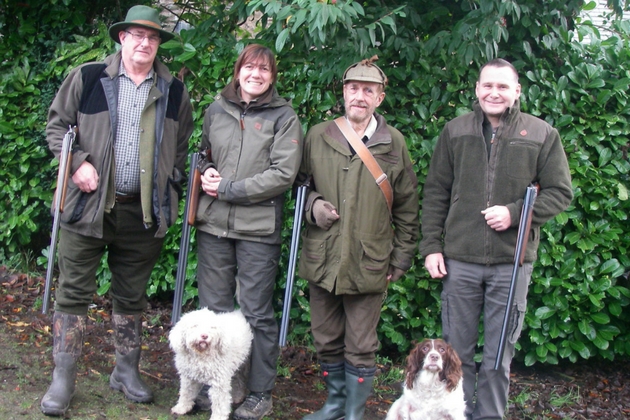

The “syndicate” with Lexie the lagotto and springer spaniel Holly
It is the dream of many sportsmen to own their own shoot, and to provide some sort of safeguard for their shooting in the future. Due to escalating land prices around the country this dream may result in owning just a few acres, but with careful planning and hard work it can still become a worthwhile project.
That is what I discovered when I resigned from a career in banking more than 40 years ago and swapped the over-populated West Midlands for a remote area of the south Shropshire hills. It was certainly a gamble, but it paid off and has rewarded me with everything I want in life.
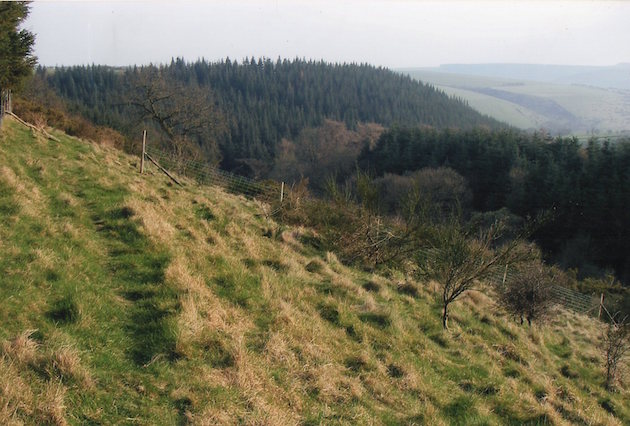
The steep hillside which became an excellent small shoot
Planning out the land
Initially my land was a steep, heavily overgrazed hillside with just seven mature oak trees and an elm that subsequently became a victim of Dutch elm disease that was rampaging through the UK at the time. Beyond the boundary was a dense 500-acre conifer wood on one side and hundreds of acres of grazing for sheep and cattle on the other. This was hardly the ideal habitat for game, so I needed to provide the necessary attractive cover on my own land. Careful detailed planning was essential at the outset.
- I planted two spinneys on the upper slope, leaving the lower to regenerate as scrubland prior to cutting four rides through the length of it.
- Overall conservation was combined with shoot management, so bird-nesting boxes were installed along with the planting of suitable undergrowth to provide cover and natural food for wildlife in general.
How to start up your own DIY shoot
Starting a little DIY shoot can be great fun and very rewarding. In fact, it is the DIY shoot that…
Tax and the DIY shoot
Many shoots on farms and estates, with just a modest number of shoot days taken by family and friends, will be run as DIY…
Creating a flightpond
- Next on the list was a flightpond, which was no easy task on land with no natural water supply.
- The only option was to bulldoze a pool on the upper slope adjoining the smaller of the two spinneys. This was achieved, using the surplus soil for the banks and then spreading 6in of sand before laying the butyl liner as protection against any sharp stones — a puncture could have been very costly.
- The pool size was approximately 20 yards long by 8 yards wide. It was small, certainly, but I well remember enjoying some excellent sport years ago on one slightly smaller.
- Within a couple of weeks heavy rain had filled my pool. The water depth was approximately 10in at one end and 6in at the other.
- The next task was to fence the pond securely with strong mesh. The last thing we needed was badgers and foxes wading into the water.
- By the following mid-summer the banks and surrounding areas were a mass of natural vegetation, and all traces of artificiality had disappeared.
Duck flighting
Though our pool is small, it is sheltered by a few surrounding trees atop the hillside so it presents some of the most testing flight shooting I have ever experienced. Wind direction is not always a guide to the direction from which the duck arrive. Mostly, ducks flight up the small valley and then low up the steep slope to the pool.
We limit our duck flighting to around every three weeks, making it a finale to our organised shoots.
I make it a rule to pack up and leave before deep darkness, thus allowing any late arrivals to land and feed undisturbed. These birds will be the nucleus of our next flight. Occasionally, teal will visit, and a Canada goose has been recorded on our trail camera.
While algae can be a problem, it can also be useful. Duck do not seem to be deterred by it and it is evidence of their presence.
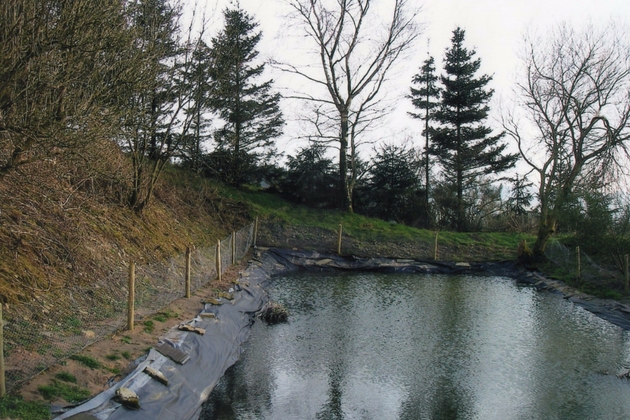
The flightpond in early days – build by hand, foilage has subsequently grown over the side and it now fits seamlessly into its surroundings
The arrival of deer
While it has taken several years to establish this miniature shoot, it is now certainly proving its worth as it offers walked-up pheasant, woodcock and rabbits along with pigeon flighting. A few years ago, deer moved in, both roe and muntjac, so we have set up a feeding station and enjoy the occasional stalk. Now wild boar have arrived, viewed on the roadside bordering our upper boundary by a passing motorist. It is early days yet but we can only wait and hope.
Rough shooting on my own shoot
I now have my own small unofficial “syndicate” comprising Kevin, who assists me with gamekeeping duties, and Lee and his wife Alison, who are two keen shooting friends who visit once a month. They have a couple of excellent dogs — a springer spaniel and a lagotto.
Few sportsmen are familiar with the lagotto, and most have never even heard of them. This breed has been in the UK only for about a quarter of a century, having been introduced from the Comacchio marshes region of Italy where, for years, its principal role has been that of a hunting dog. However, for the past century or so they have been used primarily for finding truffles, but their keen hunting instinct remains. Having watched Lexie the lagotto work, I can vouch for this. She has an unbelievably keen nose and generally works within a 10-yard radius of Alison. The other dog, Holly, is a well-trained springer spaniel. One could not wish for two better dogs on a shooting day. On several occasions they have retrieved runners that we were on the point of giving up as lost.
While the acreage on my shoot is small, shooting it certainly involves a good few hours’ hard work. I position one Gun on each of the rides with dense rough cover to be worked on either side. We have strict safety rules on this sloping terrain: Guns must not shoot at birds that break downhill; low birds are left to the one on the bottom ride; and crossing shots can safely be taken at those that break from higher up.
It is important that the advancing lines know exactly where Guns to the right and left are, so every few yards the whereabouts of these are ascertained. We move slowly, allowing both dogs to work thoroughly. Shots at birds going away down the rides are perfectly safe, as are any that flush to the rear of the advancing line.
Our pheasant rearing has always been on a small scale, as too many birds on a restricted acreage would only lead to straying. Likewise, our bag is restricted to no more than 10, and only cocks are shot once Christmas looms. My policy has always been quality rather than quantity.
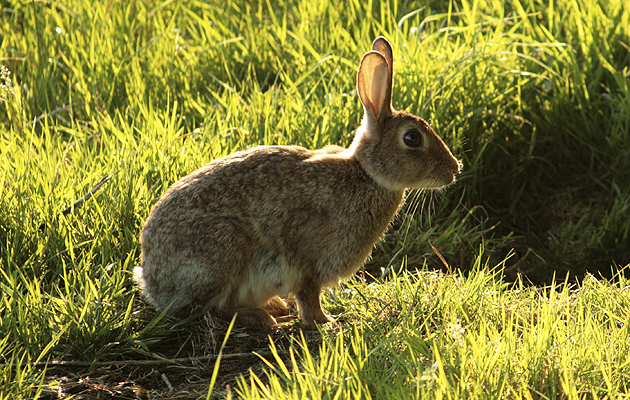
Rabbits are taken only if they bolt straight along one of the rides
Rabbits are only taken if they bolt straight along one of the rides, and we are fortunate in having a few woodcock from November onwards.
Again, safe shooting is paramount. Often these birds have their favourite daytime resting places beneath evergreen bushes such as holly.
Something that I find most satisfying on a shoot of this size is being able to recall each shot at the end of the day. Here, walked-up birds present a challenge due to the layout of the rides. By not over-shooting, and the fact we are in an area where the surrounding land is not conducive to pheasants, those birds that escape the Guns usually return to home ground soon afterwards.
Related Articles
Get the latest news delivered direct to your door
Subscribe to Shooting Times & Country
Discover the ultimate companion for field sports enthusiasts with Shooting Times & Country Magazine, the UK’s leading weekly publication that has been at the forefront of shooting culture since 1882. Subscribers gain access to expert tips, comprehensive gear reviews, seasonal advice and a vibrant community of like-minded shooters.
Save on shop price when you subscribe with weekly issues featuring in-depth articles on gundog training, exclusive member offers and access to the digital back issue library. A Shooting Times & Country subscription is more than a magazine, don’t just read about the countryside; immerse yourself in its most authoritative and engaging publication.
